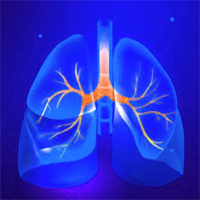Secretion management in patients with ineffective airway clearance with non-invasive mechanical ventilation use: Expert guidance for clinical practice

Accepted: April 17, 2021
All claims expressed in this article are solely those of the authors and do not necessarily represent those of their affiliated organizations, or those of the publisher, the editors and the reviewers. Any product that may be evaluated in this article or claim that may be made by its manufacturer is not guaranteed or endorsed by the publisher.
Authors
Non-invasive ventilation (NIV) is a mainstay of management of chronic respiratory failure in many disorders which are known to cause abnormal airway secretion clearance. Currently, there is no guidance regarding either the secretion handling during NIV use or the role of NIV in secretion management in these patients. The aim of this document was to provide an overview of the various techniques available in the management of respiratory secretions and their use in conjunction with NIV. Literature search was performed using the keywords, “(secretion OR secretions) AND (noninvasive ventilation OR NIV)” on PubMed and EMBASE. The search yielded 1681 and 509 titles from PubMed and EMBASE, respectively. After screening, 19 articles were included in this review. Suggestions of the expert panel were formulated by mutual consensus after reviewing the relevant literature. The draft of the expert panel’s suggestions was circulated among all authors via electronic mail for comments. Any conflicts were resolved by mutual discussion to achieve agreement. The final document was approved by all. This document by the International Network for Airway Secretions Management in NIV describes various airway secretion clearance techniques. It provides the expert panel’s suggestions for the use of these techniques in conjunction with NIV for patients with muco-obstructive and neuromuscular disorders.
How to Cite

This work is licensed under a Creative Commons Attribution-NonCommercial 4.0 International License.
PAGEPress has chosen to apply the Creative Commons Attribution NonCommercial 4.0 International License (CC BY-NC 4.0) to all manuscripts to be published.
Similar Articles
- Ahel El Haj Chehade, Ahmad Basil Nasir, Jo Elle G. Peterson, Timothy Ramseyer, Himanshu Bhardwaj, Thoracic endometriosis presenting as hemopneumothorax , Monaldi Archives for Chest Disease: Vol. 93 No. 3 (2023)
- Joana Vieira Naia, Diana Pimenta, Anita Paiva, Rita Costa, Conceição Souto de Moura, Raquel Pereira, João Filipe Cruz, When benign leiomyomas metastasize to the lungs - a case report , Monaldi Archives for Chest Disease: Vol. 93 No. 4 (2023)
- Malay Sarkar, Irappa Madabhavi, Vocal resonance: a narrative review , Monaldi Archives for Chest Disease: Early Access
You may also start an advanced similarity search for this article.

 https://doi.org/10.4081/monaldi.2021.1499
https://doi.org/10.4081/monaldi.2021.1499




